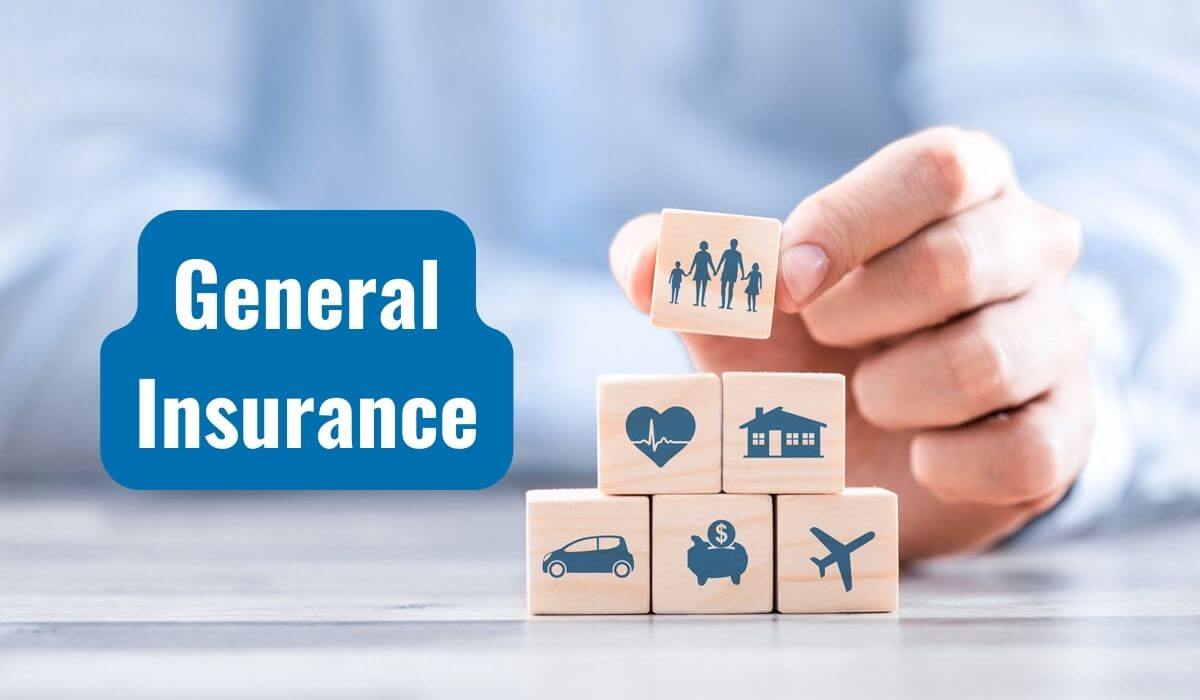**Car Accident Hit from Behind Injury**
Buckle up! We’re delving into the world of rear-end collisions, a type of car accident that can leave you with more than just a dented bumper. Picture this: you’re cruising along, minding your own business, when suddenly, WHAM! Another car plows into the back of yours. The impact jolts you forward, your head snapping back and forth like a ragdoll. In the aftermath, you might be left wondering what just happened and how to pick up the pieces.
**Understanding a Car Accident Hit from Behind**
Rear-end collisions, also known as rear-enders, occur when a moving vehicle strikes the rear of another vehicle. They’re usually caused by distracted driving, tailgating, or sudden stops. These accidents can range from minor fender-benders to serious, life-threatening crashes. The impact can cause a variety of injuries, including whiplash, neck pain, back pain, and head injuries. Whiplash, a common injury in rear-end collisions, occurs when the head is suddenly forced forward and then backward, straining the neck muscles and ligaments. It can cause pain, stiffness, and headaches that can linger for weeks or even months.
The severity of your injuries will depend on several factors, including the speed of the impact, the size and weight of the vehicles involved, and your position in the car. Even if you don’t feel injured immediately after the accident, it’s important to seek medical attention as soon as possible. Some injuries, such as whiplash, may not manifest themselves until hours or days later.
If you’ve been involved in a rear-end collision, don’t panic. Here are a few steps to follow:
-
Stay calm and assess the situation
-
Check for injuries
-
Call the police
-
Exchange information with the other driver
-
Take photos of the damage
-
Seek medical attention
-
Contact your insurance company
Dealing with the aftermath of a car accident can be stressful, but it’s important to remember that you’re not alone. There are resources available to help you through this process, including attorneys, insurance companies, and support groups.
A rear-end collision can be a distressing experience, leaving you with injuries, property damage, and emotional trauma. Rear-end accidents often occur in stop-and-go traffic when one vehicle runs into the back of another. Common injuries from these accidents include whiplash, neck injuries, back pain, and head injuries. If you’ve been injured in a rear-end collision, it’s important to seek medical attention right away and contact a lawyer to discuss your legal options.
**Common Causes of Rear-End Collisions**
Several factors can lead to rear-end collisions, but the most common causes include:
**Tailgating**
Tailgating is driving too closely behind another vehicle. It’s a dangerous practice that increases the risk of a rear-end collision, especially when the driver in front has to brake suddenly. Many factors can cause tailgating, including:
- Aggressive driving
- Inattention
- Speeding
- Distraction
Tailgating is a major problem on our roads today. According to the National Highway Traffic Safety Administration (NHTSA), rear-end collisions account for nearly one-third of all traffic accidents in the United States. About half of these accidents involve a driver who was tailgating.
It is important to be aware of the dangers of tailgating and to avoid doing it yourself. If you see a vehicle tailgating you, increase your following distance to provide yourself with more time to react if the vehicle in front of you stops suddenly.
Car Accident Hit from Behind: Seek Medical Attention Promptly
If you’ve been involved in a car accident where you were hit from behind, you may be experiencing a range of physical and emotional symptoms. It’s crucial to seek medical attention immediately, as even seemingly minor injuries can have long-term consequences.
Immediate Consequences of a Hit from Behind
The sudden impact of a rear-end collision can cause a variety of injuries, including:
- Neck injuries: Whiplash, a common injury in rear-end crashes, occurs when the head is violently jerked back and forth. This can damage muscles, ligaments, and nerves in the neck, leading to pain, stiffness, and reduced range of motion.
- Back injuries: The impact can also injure the back, causing pain, muscle spasms, and nerve damage.
- Head injuries: Head injuries can range from minor concussions to severe traumatic brain injuries. Symptoms can include headaches, nausea, dizziness, and confusion.
Common Symptoms and Signs After a Rear-End Collision
Apart from the aforementioned injuries, you may also experience other symptoms after a rear-end collision, such as:
- Pain: You may experience pain in your neck, back, head, or other areas of your body. The pain may be sharp and immediate or develop gradually over time.
- Stiffness: The muscles in your neck, back, or other affected areas may become stiff and sore, making it difficult to move.
- Headaches: Headaches are a common symptom after a rear-end collision, especially if you have sustained a head injury.
- Dizziness: You may feel dizzy or lightheaded after a rear-end collision, which can be a sign of a concussion or other head injury.
- 恶心: Some people experience nausea or vomiting after a rear-end collision, which can be a sign of a concussion or other head injury.
- Blurred vision: If you have sustained a head injury, you may experience blurred vision or other visual disturbances.
- Fatigue: You may feel tired or fatigued after a rear-end collision, which can be a sign of a concussion or other head injury.
Don’t Ignore the Signs
If you’ve been involved in a car accident and have experienced any of these symptoms, it’s important to seek medical attention promptly. Early diagnosis and treatment can significantly improve your chances of a full recovery.
Car Accident Hit From Behind Injury: What You Need to Know**
Being rear-ended in a car accident can be a frightening and painful experience. The impact of the collision can cause a variety of injuries, some of which may not be immediately apparent. If you’ve been hit from behind in a car accident, it’s important to seek medical attention as soon as possible to assess your injuries and begin treatment.
**Types of Injuries**
The most common injuries sustained in rear-end accidents include:
- **Whiplash** is a neck injury that occurs when the head is suddenly thrown back and forth. This can cause pain, stiffness, and headaches.
- **Back pain** is another common injury in rear-end accidents. The impact of the collision can put a lot of stress on the back, causing pain and muscle spasms.
- **Head injuries** can range from minor bumps and bruises to more serious injuries such as concussions and skull fractures.
- **Soft tissue damage** includes injuries to the muscles, tendons, and ligaments. This type of injury can cause pain, swelling, and bruising.
- **Psychological injuries** such as anxiety, depression, and post-traumatic stress disorder (PTSD) are also possible after a rear-end accident.
- **Seek medical attention** as soon as possible to assess your injuries and begin treatment.
- **Exchange information** with the other driver, including your name, address, phone number, and insurance information.
- **File a police report** to document the accident.
- **Contact your insurance company** to report the accident and file a claim.
- **Keep a record** of all your medical expenses, lost wages, and other expenses related to the accident.
- **Pull over.** If possible, pull over to the side of the road.
- **Stay calm and collected.** It’s natural to be shaken up after a car accident, but it’s important to stay calm and collected. This will help you make the best decisions for yourself and your passengers.
- **Check for injuries.** First, check yourself for injuries. Once you’ve checked yourself for injuries, check your passengers as well. If you or anyone else is injured, call 911 immediately.
- **Exchange information.** Once you’ve checked for injuries, exchange information with the other driver(s) involved in the accident. This includes your name, address, phone number, insurance information, and license numbers. You can also take pictures of this information, as well as the damage to your vehicles.
- **Report the accident to your insurance company.** You should report the accident to your insurance company as soon as possible. They will be able to help you file a claim and get your car repaired or replaced.
- Head injuries
- Back injuries
- Chest injuries
- Abdominal injuries
- Leg injuries
- Check for injuries. First, check yourself for injuries. Once you’ve checked yourself for injuries, check your passengers as well. If you or anyone else is injured, call 911 immediately.
- Move to safety. If possible, move your car to the side of the road. This will help prevent further accidents and allow emergency responders to access the scene.
- Exchange information. Once you are in a safe place, exchange information with the other driver(s) involved in the accident. This includes your name, address, phone number, insurance information, and license numbers.
- Take photos. If possible, take photos of the accident scene. This will help document the damage and provide evidence for your insurance company.
- Report the accident. You are required by law to report any car accident to the police. You can do this by calling 911 or by going to the nearest police station.
- Seek medical attention. Even if you do not feel injured, it is important to seek medical attention after a car accident. Some injuries may not be immediately apparent, and it is important to rule out any serious injuries.
- Contact your insurance company. You should contact your insurance company as soon as possible after the accident. They will be able to help you file a claim and get your car repaired or replaced.
- Be aware of your surroundings. Pay attention to the traffic around you and anticipate potential hazards.
- Leave plenty of space between you and the car in front of you. This will give you time to react if the car in front of you stops suddenly.
- Avoid tailgating. Tailgating is a major cause of rear-end collisions. Give yourself plenty of space to react, and be aware of the blind spots of the car in front of you.
- Use your turn signals. When you are changing lanes or turning, use your turn signals to let other drivers know your intentions.
- Be predictable. Drive in a consistent and predictable manner. This will help other drivers anticipate your movements and avoid accidents.
- Avoid distractions. Distracted driving is a major cause of car accidents. Put your phone away, avoid eating or drinking while driving, and focus on the road.
- Get regular vehicle maintenance. Make sure your car is in good working condition. This includes having your brakes, tires, and lights checked regularly. A well-maintained car is less likely to break down or cause an accident.
**What to Do After a Rear-End Accident**
If you’ve been hit from behind in a car accident, there are a few things you should do to protect your health and your legal rights:
Being the victim of a car accident is already a big bummer. But when the crash happens because someone rear-ended you, the situation becomes even more frustrating. Besides being startled about what just happened, you’re also left with the trouble of dealing with the other driver and insurance companies. Don’t fret though. We’ll help you sort out what to do when you’ve been hit from behind.
If you’re one of the unlucky few who have been rear-ended, don’t panic. Here are some things you should do to protect yourself and your rights:
**Legal Considerations**
In many cases, the driver who rear-ended another vehicle is considered at fault. This is because rear-end collisions are almost always caused by the negligence of the driver in the back. However, there may be some exceptions to this rule. For example, if the driver who was rear-ended was stopped suddenly and without warning, the driver who rear-ended them may not be held liable. It is important to gather evidence and report the accident accurately to your insurance company and the police. This will help ensure that you are fairly compensated for your injuries and damages.
Here are some specific steps you should take after being rear-ended:
**Remember, the most important thing is to stay safe and get the medical attention you need. If you have any questions about your legal rights after being rear-ended, you should consult with an attorney.**
Car Accident Hit From Behind Injury: A Guide to Recovery and Treatment
Being the victim of a rear-end car accident can be a distressing and overwhelming experience, leaving you with injuries, emotional trauma, and a host of other challenges. If you’re suffering from a car accident hit from behind injury, it’s imperative to seek medical attention promptly and prioritize your recovery. This article will delve into the various aspects of recovery and treatment, providing you with valuable information and resources.
Recovery and Treatment
Recovering from a rear-end accident encompasses a multifaceted approach, encompassing medical interventions, physical rehabilitation, and emotional support. Medical treatment often involves addressing acute injuries, such as whiplash, contusions, or lacerations. Physical therapy plays a crucial role in restoring range of motion, reducing pain, and enhancing overall mobility. Additionally, emotional support from family, friends, or a therapist can be invaluable in coping with the psychological impact of the accident.
Medical Treatment
Seeking medical attention immediately after the accident is paramount. Even if you don’t feel immediate pain, it’s crucial to be evaluated by a medical professional. Whiplash, a common injury in rear-end accidents, may not manifest symptoms until later. Prompt medical intervention can prevent complications and ensure timely treatment.
Physical Therapy
Physical therapy is an integral part of the recovery process. A physical therapist will assess your injuries and design a personalized treatment plan. This may include exercises to improve range of motion, reduce muscle spasms, and increase strength. Regular physical therapy sessions can accelerate healing, alleviate pain, and restore your physical function.
Emotional Support
The emotional impact of a car accident can be profound. Fear, anxiety, and depression are common reactions. Seeking emotional support is essential for coping with these challenges. Talking to a therapist or joining a support group can provide a safe space to process your emotions, develop coping mechanisms, and rebuild your confidence.
Legal Considerations
In the aftermath of a rear-end accident, understanding your legal rights is crucial. Consulting with an attorney can help you navigate the legal process, file insurance claims, and ensure you receive fair compensation for your injuries and damages.
Prevention
While it’s not always possible to prevent a rear-end accident, taking certain precautions can reduce your risk. Maintaining a safe following distance, avoiding distractions while driving, and obeying traffic laws are essential safety measures. Remaining vigilant and defensive behind the wheel can help you prevent accidents and protect yourself from injury.
Car Accident Hit From Behind Injury: What To Do?
Car accidents are always stressful. But being hit from behind can be particularly jarring, as you may not see it coming. Injuries from a rear-end collision can range from minor to severe, and it is crucial to seek medical attention immediately after the accident. If you think or know that you have suffered an injury, never refuse medical treatment at the accident scene because you don’t want to seem like you’re overreacting.
Common Car Accident Injuries From Being Hit From Behind
Whiplash is the most common injury sustained in a rear-end collision. It is a neck injury that occurs when the head is suddenly thrown back and then forward. Whiplash can cause pain, stiffness, and headaches. Other common injuries from a rear-end collision include:
What To Do After A Car Accident Hit From Behind
If you are involved in a rear-end collision, it is important to stay calm and take the following steps:
Prevention Tips
To minimize the risk of being hit from behind, stay alert, maintain a safe following distance, and avoid distractions while driving. Here are some additional tips to help prevent a rear-end collision:




Leave a Reply